There’s something uniquely terrifying about the thought of a fire aboard a boat. Whether you’re docked in a marina or anchored off a beach, boat fires spread fast and your options for containment are limited.
For liveaboard cruisers especially, the risks are compounded. Not just by isolation or distance from emergency services, but because the boat isn’t just a vessel, it’s home.
While we all like to believe we’re cautious, the reality is that fires aboard happen more often than you might think, and often through no fault of your own.
Why fires happen on boats
Most modern boats rely heavily on complex electrical systems. They have lithium batteries aboard powering tools, toys and devices, and a range of cooking appliances. Fuel lines weave through the engine bay and having flammable liquids aboard is normal. It’s part of what makes full-time life afloat possible. But they also introduce multiple potential sources of ignition.
Some of the most common causes of fires aboard include:
- Faulty or aging electrical wiring
- Overloaded circuits or improper installations
- Corroded battery terminals or short circuits
- Galley fires from stoves or gas leaks
- Engine room fires due to fuel leaks or overheating
- External sources, like a nearby boat catching fire
When a fire starts it doesn’t take long before smoke fills the cabin, and heat builds to destructive levels. Despite being surrounded by water, it’s hard to fight fire on a boat, and even if you’re alongside in a marina the fire department may take too long to arrive.
- “Newport Anchorage fire, Sydney, 22 July 2009” by NSW Maritime
Fire prevention tips for cruisers
The best way to deal with a fire is to avoid one altogether. Here are some best practices for reducing the risk of fire aboard:
1. Regularly inspect your electrical system
Check wiring for signs of corrosion, fraying, or heat damage, and don’t overload circuits or run high draw devices on under rated wiring. Make sure all new installations meet marine standards and are done by someone with a high level of competence.
2. Maintain your house bank batteries
Clean terminals and inspect for corrosion as part of your maintenance routine. Make sure battery banks are secured to prevent shifting and cable strain, and follow the manufacturer charging guidelines.
3. Test and service gas systems
Check your gas lines and bottles regularly, and if you think you smell a leak, address it immediately. Replace hoses and regulators according to manufacturer specs, and ensure you have working gas alarms installed in relevant areas of the boat.
4. Be vigilant when cooking
Never leave galley appliances unattended and keep flammables well away from stoves and BBQs. It’s a good practice to turn off gas or power sources when not in use.
5. Opt for quality lithium-ion batteries
When buying tool batteries, electric scooters, toys, cameras and other electronic devices powered by lithium batteries, opt for quality over the cheapest option. Follow the manufacturer charging guidelines and dispose of any damaged or bulging batteries.
6. Equip fire suppression options
Install fire alarms and fire extinguishers in key areas like the galley, engine room, and cabins, and regularly check that extinguishers are charged and accessible. Consider installing an automatic engine room suppression system and keep fire blankets on hand for galley fires.
7. Have an emergency plan
Prepare for the worst-case scenario by having emergency tools (bolt cutters, VHF, lifejackets) in easy to reach places, and practice escape drills with the crew. This is especially important if you have children aboard. Make a plan for contacting emergency services or nearby boats, and make sure it’s reviewed and modified as your cruising grounds change.
- US Coast Guard
- Yacht fire in the Chesapeake
If a fire starts
If a fire starts there is often little you can do, especially if it’s not caught early. The top priority is the safety of the crew above all else; follow your emergency plans, get out of the area of risk and call for help.
Real-world examples: When it’s not your fault
A tragic reality of fire is that sometimes, it doesn’t matter how careful you are. If the boat next to you catches fire and the blaze spreads, your vessel could become a total loss by proximity alone.
Working at Pantaenius Australia has given me a greater insight into the frequency into these incidents, and the complexities that can arise in assigning liability.
In one recent case in Sydney, Australia, a brand-new Integrity Sedan Cruiser berthed in a marina was destroyed along with two other vessels in a fire. Forensic investigators were unable to determine the cause of the fire or prove negligence. The result? Each owner was left to manage their own losses. It’s an outcome that’s potentially financially devastating, made more shocking by the fact that the one thing the investigators could prove was that the Integrity was not the cause of the fire. Fortunately, that boat had hull insurance with Pantaenius. They were fully covered, and the owner was paid out swiftly and completely.
- Left side vessel was covered by Pantaenius
A similar incident happened in Grenada where an Outremer performance catamaran was destroyed on the hardstand. Not because of an onboard fault or anything the Outremer owner did or didn’t do, but because the boat beside it went up first. In total, three boats were damaged in that fire, and again, investigators couldn’t assign blame. Each owner had to rely on their own insurance (or lack thereof). The Pantaenius insured owner walked away from a multi-million-dollar loss with a settlement in hand, allowing them the financial means to move forward.
These stories aren’t outliers. In tightly packed marinas or boatyards, one small fire can become everyone’s problem very quickly.
Why insurance matters
Prevention is essential, but sometimes it isn’t enough. Fires can spread in seconds, and if the cause lies outside your hull, all the vigilance in the world might not protect your boat.
That’s where insurance becomes more than a number on a page. As seen in the Integrity and Outremer cases, having comprehensive coverage can mean the difference between a manageable crisis and a total loss with no clear path forward. With the cost of boats and repairs rising sharply, few sailors can absorb that kind of loss out of pocket.
When reviewing insurance policies, it’s a good idea to check:
- The payout amount for a total loss of your boat
- What your third-party liability coverage is if a fire on your boat were to spread to another
- If there are any exclusions or conditions related to fire in the fine print
- Whether any conditions apply, such as fire extinguishers needing to be serviced annually
- What would happening if lightning were the cause of the fire
- Who to contact if a fire happened
What makes the right policy truly valuable isn’t just the payout either, it’s the support that comes with it. Fast response times, clear communication, and coverage that doesn’t suddenly disappear when the unexpected happens are essential.
- “Newport Anchorage fire, Sydney, 22 July 2009” by NSW Maritime
Managing risk and preparing for the worst
Having a fire aboard is one of a cruiser’s worst nightmares, and sadly the risk is real. By taking preventative steps, staying alert, and investing in the right coverage, you can reduce your chances of loss, and give yourself the best chance of bouncing back if disaster does strike.
Have you had a fire aboard or know someone who has? How did they manage it?
By sharing our experiences and knowledge with respect and kindness, we can get the conversation going and help build a valuable pool of information for the cruising community.

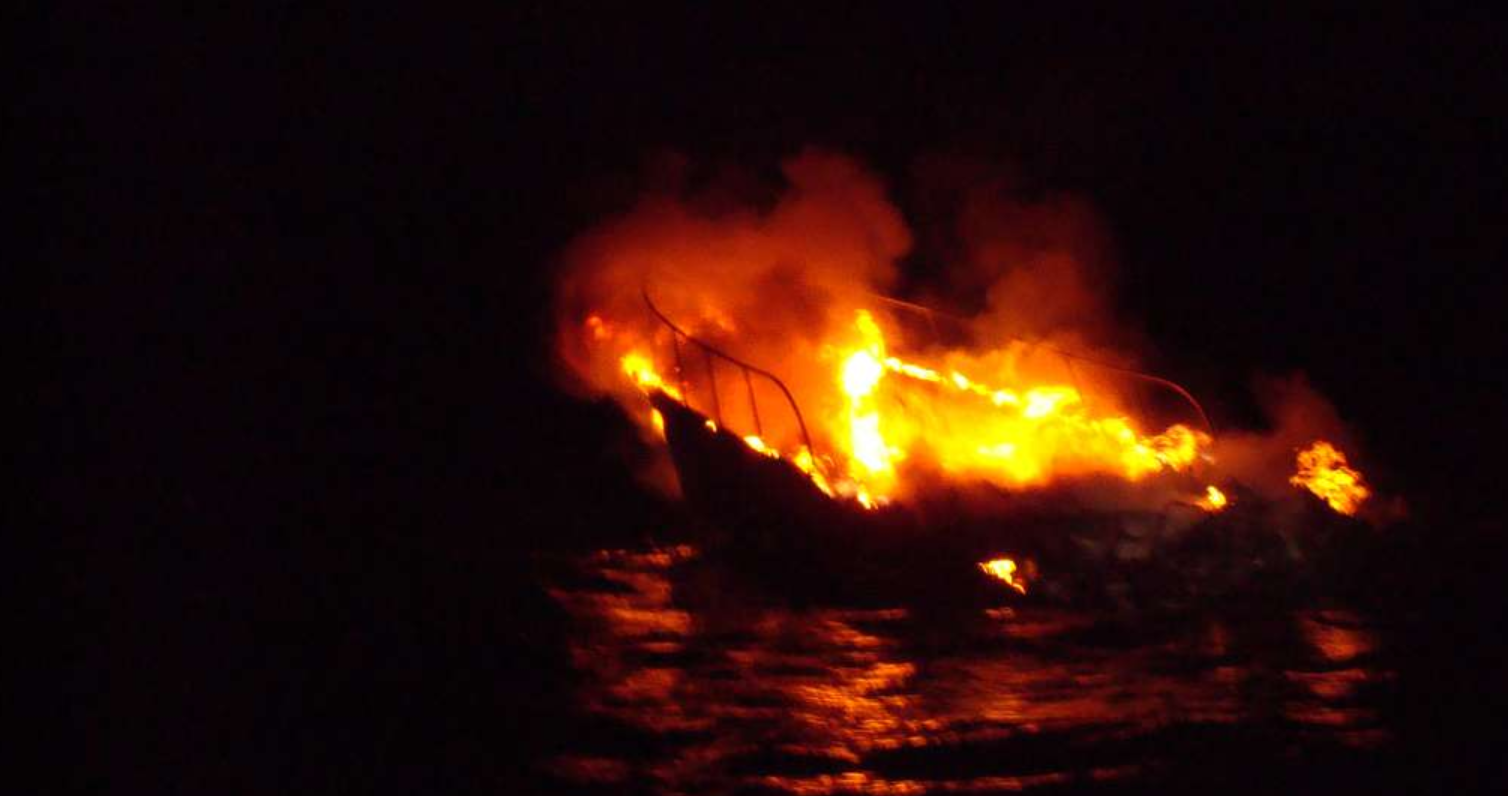
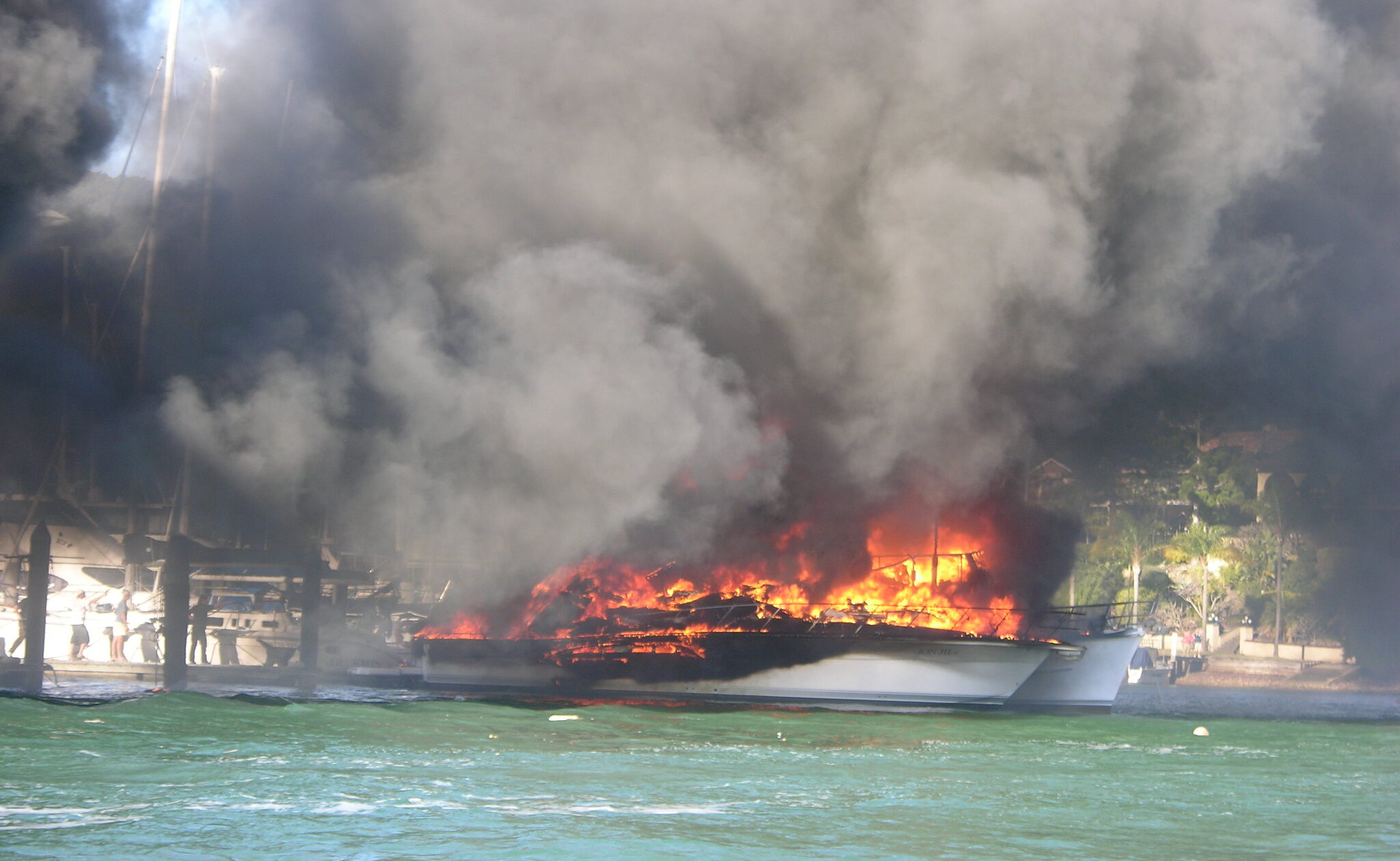

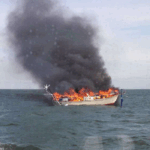
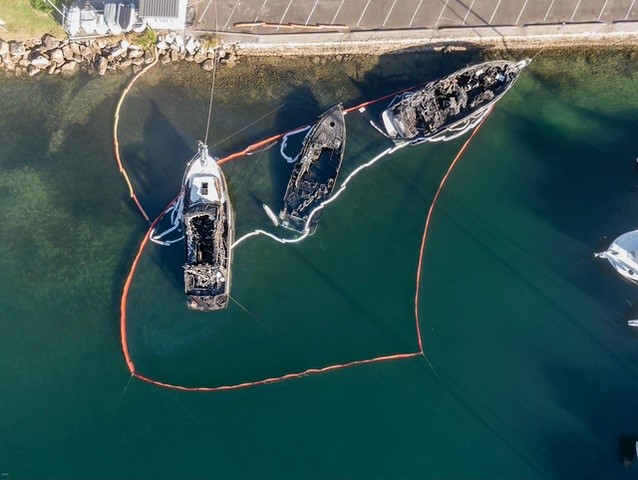
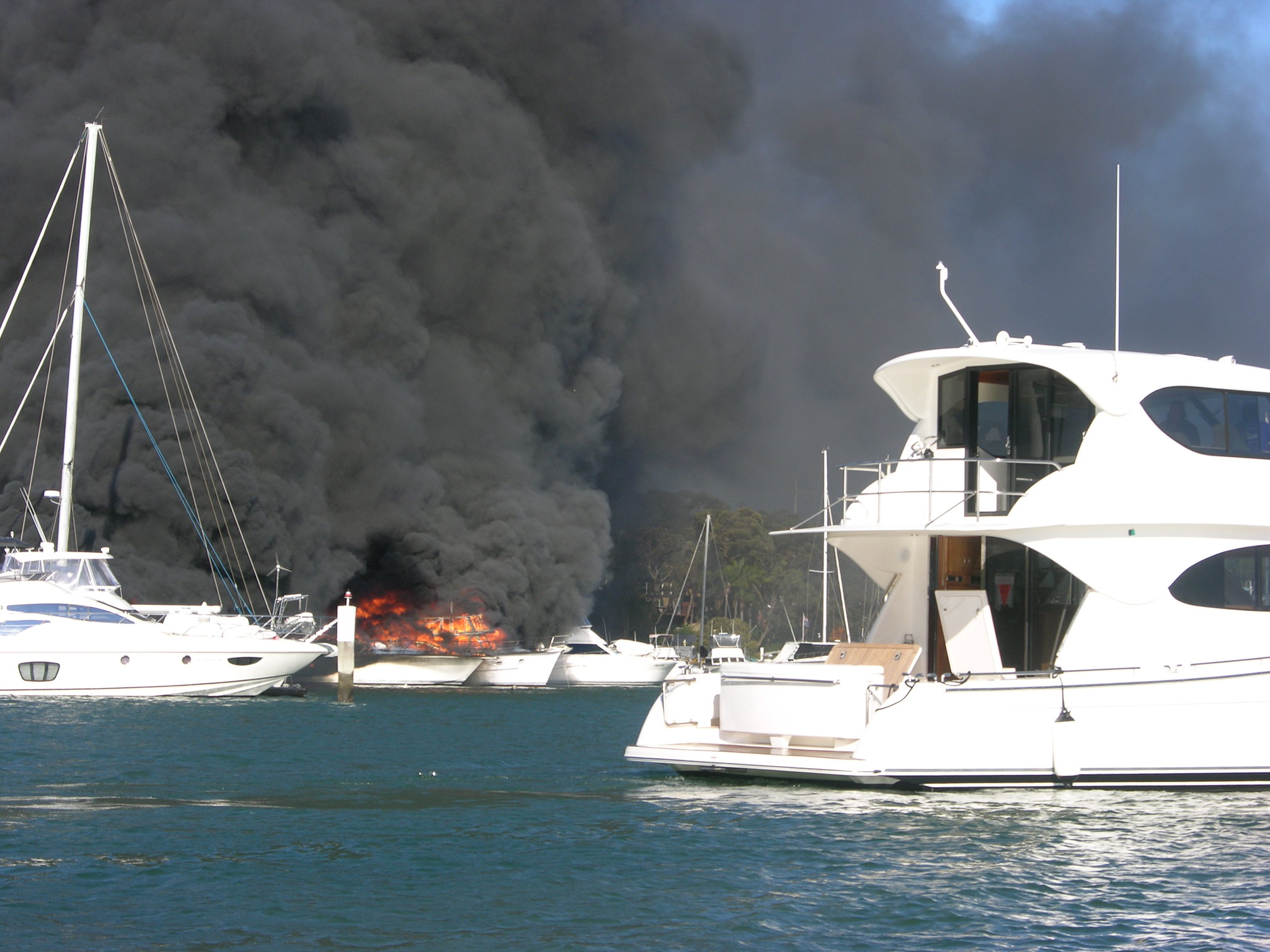


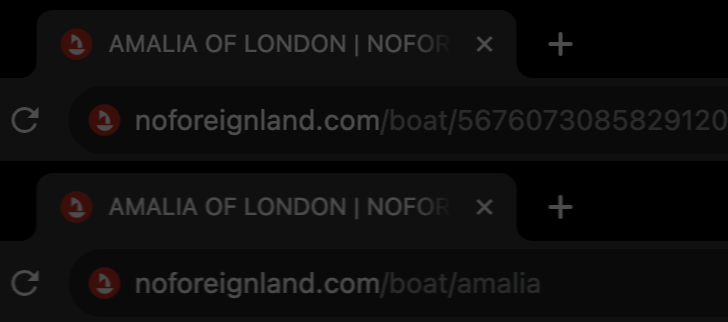
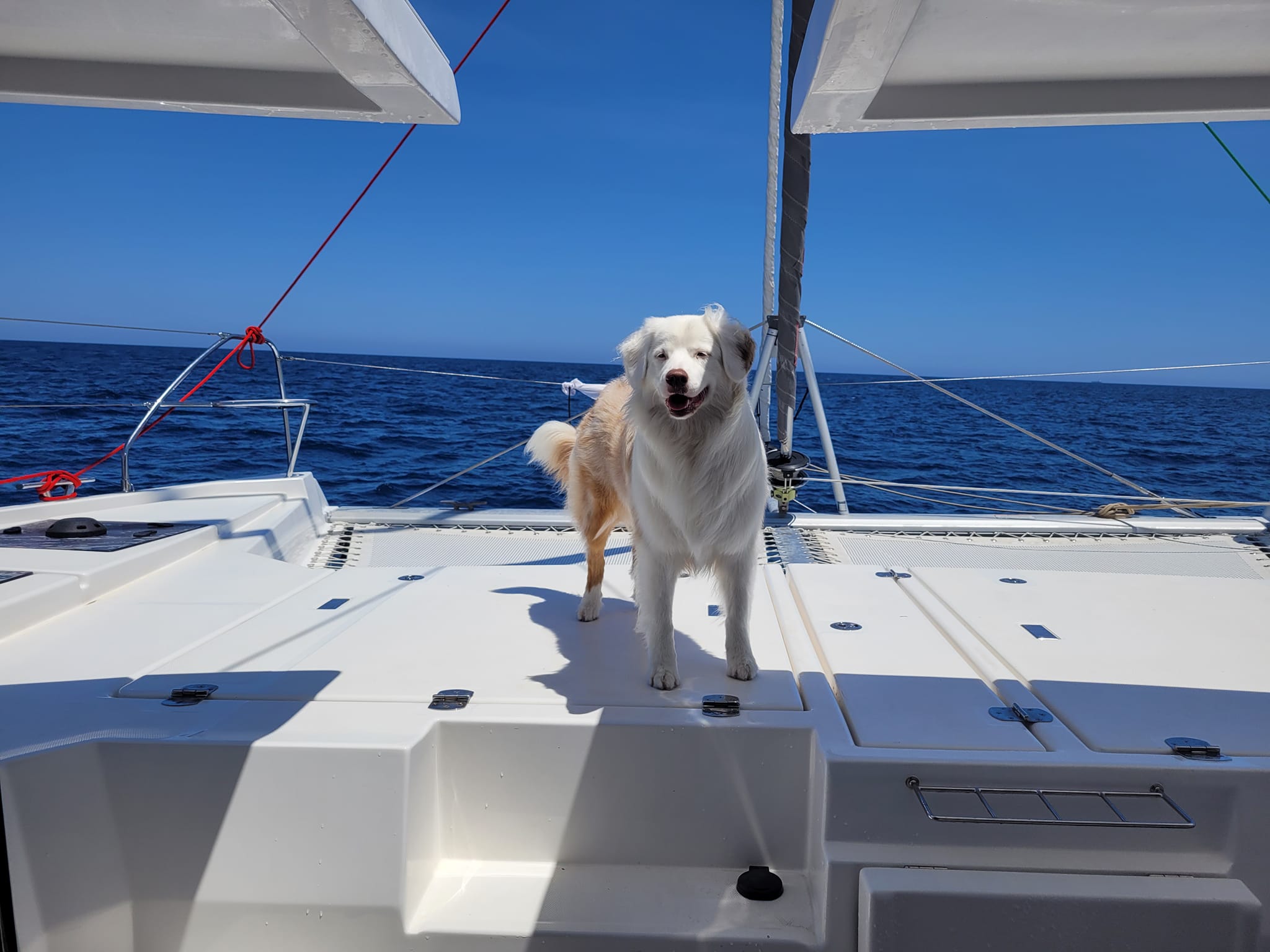
I was about to write that was a “cool” article but perhaps that’s not an apt expression!
An interesting article.
I am left scratching my head asking a) why no information about fire extinguishers and b) how do you fight a fire with bolt cutters?
Every blog post would be some kilometers long if it was to include all aspects of the topic being discussed, so I suppose we have to cover the topic of fire extinguishers in the comments section. One of the things I read from the article is that “if the neighbour boat catches fire, the only thing that helps is a good insurance”. That said, fires starting on your own boat while people are awake and alert may be stopped by a good fire extinguisher or fire blanket. Unless the fire starts in a Li-Ion-battery, then one is pretty much doomed.
From what I’ve heard, the powder-extinguishers can be quite horrid on a boat – the powder itself is corrosive and will get in everywhere, so even if the fire is stopped, the value of the boat may be dramatically lowered, electrics having to be redone, etc. In addition, the fog from the powder may make evacuation harder. Hence I’ve heard that one should rather have foam-based extinguishers on board. I’m not sure if it’s true or not.
My thought on bolt cutters is it’s about being able to make a fast escape. You don’t need to find and fumble with keys to unlock padlocks/chains/cables that might have been used to secure lockers and tenders, just cut and go. As for fire extinguishers, that could be a detailed subject to get into, that people probably should think about in the context of their own boat. Personally we have multiple fire extinguishers on the boat, including one that’s larger than the rest which is specifically for lithium fires.
We have friends who had a lithium battery in one of their electronics start smouldering while it was laying on the bed – luckily they were aboard and were able to throw it out the closest porthole, but if they hadn’t been. they likely would have lost the boat rather than just having to replace the mattress;.